Experimental Study of the Use of Tracing Particles for Interface Tracking in Primary Cementing in an Eccentric Hele–Shaw Cell
Abstract
1. Introduction
2. Experimental Design and Procedure
3. Experimental Results and Discussion
3.1. Experimental Overview
3.2. Displacement Flow Tests 1 and 2: Newtonian Fluids
3.3. Displacement Flow Tests 3 to 5: Newtonian/Non-Newtonian Fluids
3.4. Displacement Flow Tests 6 to 9: Non-Newtonian Fluids
3.5. Pressure Gradient Analysis
4. Conclusions
- While the strong secondary flows in the tests with two Newtonian fluids cause pistonlike and highly efficient displacement, the used particles can overcome these secondary flows and track and move by the interface appropriately.
- The relative weakness of the secondary flows in the displacement tests with a Newtonian displaced fluid and a non-Newtonian Herschel–Bulkley displacing fluid causes an almost stable and pistonlike displacement and a nonflat interface between the fluids. While 3000-µm intermediate buoyancy particles overcome these secondary flows and track the interface, smaller particle sizes (e.g., 1000-µm diameter) are affected by the secondary flows in the displacing fluid and accumulated on the narrow side. On this side, most of the particles travel toward the top with the same velocity as the interface and track it, and simultaneously some particles move toward the top with a lower velocity than the interface and bypass the interface.
- High equivalent viscosities of the fluids in the tests with two non-Newtonian Herschel–Bulkley fluids cause very weak secondary flows, and consequently, low displacement efficiencies and nonflat interfaces between fluids. All types of the used intermediate buoyancy particles released in the displaced fluid are affected by the secondary flow and move from the narrow side toward the wide sides. The particles on the wide side travel with higher velocity than the interface toward the top and the particles between the narrow and wide sides reach the interface or bypass it due to their lower velocities than the interface. Those that reach the interface move toward the wide side due to secondary flow in the displaced fluid, and their upward velocities increase. The bypassed particles below the interface move from the wide sides to the narrow side due to secondary flow in the displacing fluid, and there will be an opportunity for tracking the interface in the narrow side that is a more critical section during a primary cementing operation.
- Using neutral buoyant particles and immersing them in the displaced fluid in a displacement flow test shows that some of the particles bypass the interface due to their lower velocity than the interface. The particles above the interface move slowly from the narrow side to the wide sides, and the bypassed particles in the displacing fluid move toward the narrow side. In real field practice with long wellbore annulus, applying this approach resulted in tracking the wide and narrow sides. By using the neutral buoyant particles in the displacing fluid and their movement toward the narrow side in the worst scenario that the particles cannot overcome the secondary flow, we will have this hope to track the interface only on the narrow side.
- The measured pressure gradients in the eccentric Hele–Shaw cell indicate increasing trends over time in the displacement flow tests. The tests with two Newtonian fluids have the lowest pressure gradients, and those with two non-Newtonian fluids have the highest pressure gradients, and considerable frictional pressure drops that increase by flow rate.
Author Contributions
Funding
Institutional Review Board Statement
Informed Consent Statement
Data Availability Statement
Acknowledgments
Conflicts of Interest
References
- Nelson, E.B.; Guillot, D. Well Cementing; Schlumberger: Houston, TX, USA, 2006. [Google Scholar]
- Bishop, M.; Moran, L.; Stephens, M.; Reneau, W. A robust, field friendly, cement spacer system. In Proceedings of the AADE Fluids Conference and Exhibition, Houston, TX, USA, 8–9 April 2008. AADE-08-DF-HO-07. [Google Scholar]
- Lavrov, A.; Torsæter, M. Physics and Mechanics of Primary Well Cementing; Springer: Berlin, Germany, 2016. [Google Scholar]
- Mitsuishi, N.; Aoyagi, Y. Non-newtonian fluid flow in an eccentric annulus. J. Chem. Eng. Jpn. 1973, 6, 402–408. [Google Scholar] [CrossRef]
- Jakobsen, J.; Sterri, N.; Saasen, A.; Aas, B.; Kjosnes, I.; Vigen, A. Displacements in eccentric annuli during primary cementing in deviated wells. In Proceedings of the SPE Production Operations Symposium, Oklahoma City, OK, USA, 7–9 April 1991. SPE paper no. 21686. [Google Scholar]
- Nouri, J.M.; Umur, H.; Whitelaw, J.H. Flow of Newtonian and non-Newtonian fluids in concentric and eccentric annuli. J. Fluid Mech. 1993, 253, 617–641. [Google Scholar] [CrossRef]
- Nouri, J.M.; Whitelaw, J.H. Flow of Newtonian and non-Newtonian fluids in an eccentric annulus with rotation of the inner cylinder. Int. J. Heat Fluid Flow 1997, 18, 236–246. [Google Scholar] [CrossRef]
- Tehrani, A.; Ferguson, J.; Bittleston, S. Laminar displacement in annuli: A combined experimental and theoretical study. In Proceedings of the SPE Annual Technical Conference and Exhibition, Washington, DC, USA, 4–7 October 1992. SPE-24569-MS. [Google Scholar]
- Tehrani, A.; Bittleston, S.H.; Long, P.J.G. Flow instabilities during annular displacement of one non-Newtonian fluid by another. Exp. Fluids 1993, 14, 246–256. [Google Scholar] [CrossRef]
- Escudier, M.P.; Gouldson, I.W.; Jones, D.M. Flow of shear-thinning fluids in a concentric annulus. Exp. Fluids 1995, 18, 225–238. [Google Scholar] [CrossRef]
- Escudier, M.P.; Oliveira, P.J.; Pinho, F.T.; Smith, S. Fully developed laminar low of non-Newtonian liquids through annuli: Comparison of numerical calculations with experiments. Exp. Fluids 2002, 33, 101–111. [Google Scholar] [CrossRef]
- Malekmohammadi, S.; Carrasco-Teja, M.; Storey, S.; Frigaard, I.A.; Martinez, D.M. An experimental study of laminar displacement flows in narrow vertical eccentric annuli. J. Fluid Mech. 2010, 649, 371–398. [Google Scholar] [CrossRef]
- Kim, Y.; Han, S.; Woo, N. Flow of Newtonian and non-Newtonian fluids in a concentric annulus with a rotating inner cylinder. Korea Aust. Rheol. J. 2013, 25, 77–85. [Google Scholar] [CrossRef]
- Ytrehus, J.D.; Taghipour, A.; Werner, B.; Opedal, N.; Saasen, A. Experimental study of cuttings transport efficiency of water based drilling fluids. In Proceedings of the 33rd International Conference on Ocean, Offshore and Arctic Engineering (OMAE2014), San Francisco, CA, USA, 8–13 June 2014. OMAE paper no. 2014–23960. [Google Scholar]
- Ytrehus, J.D.; Taghipour, A.; Sayindla, S.; Lund, B.; Werner, B.; Saasen, A. full scale flow loop experiments of hole cleaning performances of drilling fluids. In Proceedings of the 34th International Conference on Ocean, Offshore and Arctic Engineering (OMAE2015), St. John’s, NL, Canada, 31 May–5 June 2015. OMAE paper no. 2015–41901. [Google Scholar]
- Sayindla, S.; Lund, B.; Taghipour, A.; Werner, B.; Saasen, A.; Gyland, K.R.; Ibragimova, Z.; Ytrehus, J.D. Experimental investigation of cuttings transport with oil based drilling fluids. In Proceedings of the 35th International Conference on Ocean, Offshore and Arctic Engineering (OMAE2016), Busan, Korea, 19–24 June 2016. OMAE paper no. 2016-54047. [Google Scholar]
- Kettl, F.C.; Edwards, M.G.; Covington, R.L. Practical Horizontal Cementing Today. In Proceedings of the Middle East Oil Show, Manama, Bahrain, 3–6 April 1993. SPE paper no. 25546. [Google Scholar] [CrossRef]
- Taghavi, S.M.; Frigaard, I.A. Estimation of mixing volumes in buoyant miscible displacement flows along near-horizontal pipes. Can. J. Chem. Eng. 2013, 91, 399–412. [Google Scholar] [CrossRef]
- Lund, B.; Ytrehus, J.D.; Taghipour, A.; Saasen, A. Displacement Efficiency in Eccentric Annuli. In Proceedings of the 39th International Conference on Ocean, Offshore and Arctic Engineering (OMAE2020), Fort Lauderdale, FL, USA, 28 June–3 July 2020. OMAE paper no. 2020-18707. [Google Scholar]
- Lockyear, C.F.; Hibbert, A.P. Integrated Primary Cementing Study Defines Key Factors for Field Success. J. Pet. Technol. 1989, 41, 1320–1325. [Google Scholar] [CrossRef]
- Moran, L.K.; Savery, M.R. Fluid Movement Measurements Through Eccentric Annuli: Unique Results Uncovered. In Proceedings of the SPE Annual Technical Conference and Exhibition, Anaheim, CA, USA, 11–14 November 2007; p. 7. [Google Scholar]
- Skadsem, H.J.; Kragset, S.; Lund, B.; Ytrehus, J.D.; Taghipour, A. Annular displacement in a highly inclined irregular wellbore: Experimental and three-dimensional numerical simulations. J. Pet. Sci. Eng. 2019, 172, 998–1013. [Google Scholar] [CrossRef]
- Lund, B.; Ytrehus, J.D.; Taghipour, A.; Divyankar, S.; Saasen, A. Fluid-fluid displacement for primary cementing in deviated washout sections. In Proceedings of the 37th International Conference on Ocean, Offshore and Arctic Engineering (OMAE2018), Madrid, Spain, 17–22 June 2018. OMAE paper no. 2 018-78707. [Google Scholar]
- Lund, B.; Taghipour, A.; Ytrehus, J.D.; Saasen, A. Experimental Methods for Investigation of Drilling Fluid Displacement in Irregular Annuli. Energies 2020, 13, 5201. [Google Scholar] [CrossRef]
- Bittleston, S.; Ferguson, J.; Frigaard, I.A. Mud removal and cement placement during primary cementing of an oil well- Laminar non-Newtonian displacements in an eccentric annular Hele-Shaw cell. J. Eng. Math. 2002, 43, 229–253. [Google Scholar] [CrossRef]
- Pelipenko, S.; Frigaard, I.A. On steady state displacements in primary cementing of an oil well. J. Eng. Math. 2004, 46, 1–26. [Google Scholar] [CrossRef]
- Pelipenko, S.; Frigaard, I.A. Two-dimensional computational simulation of eccentric annular cementing displacements. IMA J. Appl. Math. 2004, 69, 557–583. [Google Scholar] [CrossRef]
- Pelipenko, S.; Frigaard, I.A. Visco-plastic fluid displacements in near-vertical narrow eccentric annuli: Prediction of travelling-wave solutions and interfacial instability. J. Fluid Mech. 2004, 520, 343–377. [Google Scholar] [CrossRef]
- Iyoho, A.W.; Azar, J.J. An accurate slot-flow model for non-newtonian fluid flow through eccentric annuli. Soc. Pet. Eng. J. 1981, 21, 565–572. [Google Scholar] [CrossRef]
- Taheri, A.; Ytrehus, J.D.; Taghipour, A.; Lund, B.; Lavrov, A.; Torsæter, M. Use of tracer particles for Tracking fluid interfaces in primary cementing. In Proceedings of the 38th International Conference on Ocean, Offshore and Arctic Engineering (OMAE2019), Glasgow, Scotland, 9–14 June 2019. OMAE paper no. 2019–96400. [Google Scholar]
- Taheri, A.; Ytrehus, J.D.; Lund, B.; Torsæter, M. Use of Concentric Hele-Shaw Cell for the Study of Displacement Flow and Interface Tracking in Primary Cementing. Energies 2021, 14, 51. [Google Scholar] [CrossRef]
- Metz, B.; Davidson, O.; de Coninck, H.C.; Loos, M.; Meyer, L.A. IPCC Special Report on Carbon Dioxide Capture and Storage; Cambridge University Press: Cambridge, UK; New York, NY, USA, 2005; 442p. [Google Scholar]
- Maleki, A.; Frigaard, I.A. Tracking fluid interfaces in primary cementing of surface casing. Phys. Fluids 2018, 30, 093104. [Google Scholar] [CrossRef]
- Frigaard, I.A.; Maleki, A. Tracking fluid interface in carbon capture and storage cement placement application. In Proceedings of the 37th International Conference on Ocean, Offshore and Arctic Engineering (OMAE2018), Madrid, Spain, 17–22 June 2018. OMAE paper no. 2018–77630. [Google Scholar]
- Taheri, A.; Ytrehus, J.D.; Taghipour, A.; Lund, B.; Lavrov, A.; Torsæter, M. Experimental study of the use of particles for tracking the interfaces in primary cementing of concentric and eccentric wells. In Proceedings of the SINTEF Proceedings, Trondheim, Norway, 17–19 June 2019; pp. 91–99, ISSN 2387-4295. [Google Scholar]
- Qwabe, L.; Pare, B.; Jonnalagadda, S.B. Mechanism of oxidation of brilliant cresyl blue with acidic chlorite and hypochlorous acid. A kinetic approach. S. Afr. J. Chem. 2005, 58, 86–92. [Google Scholar]

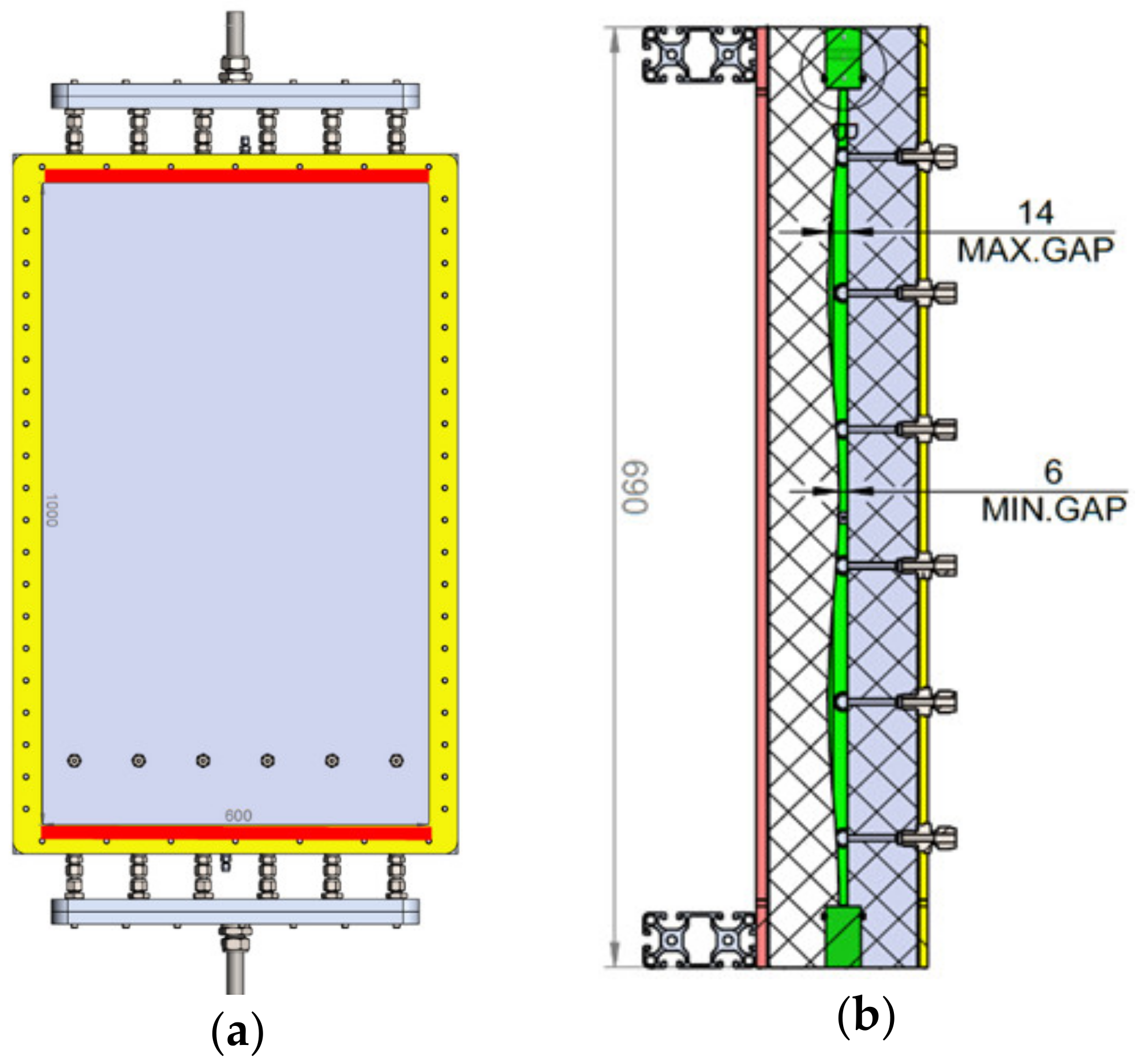
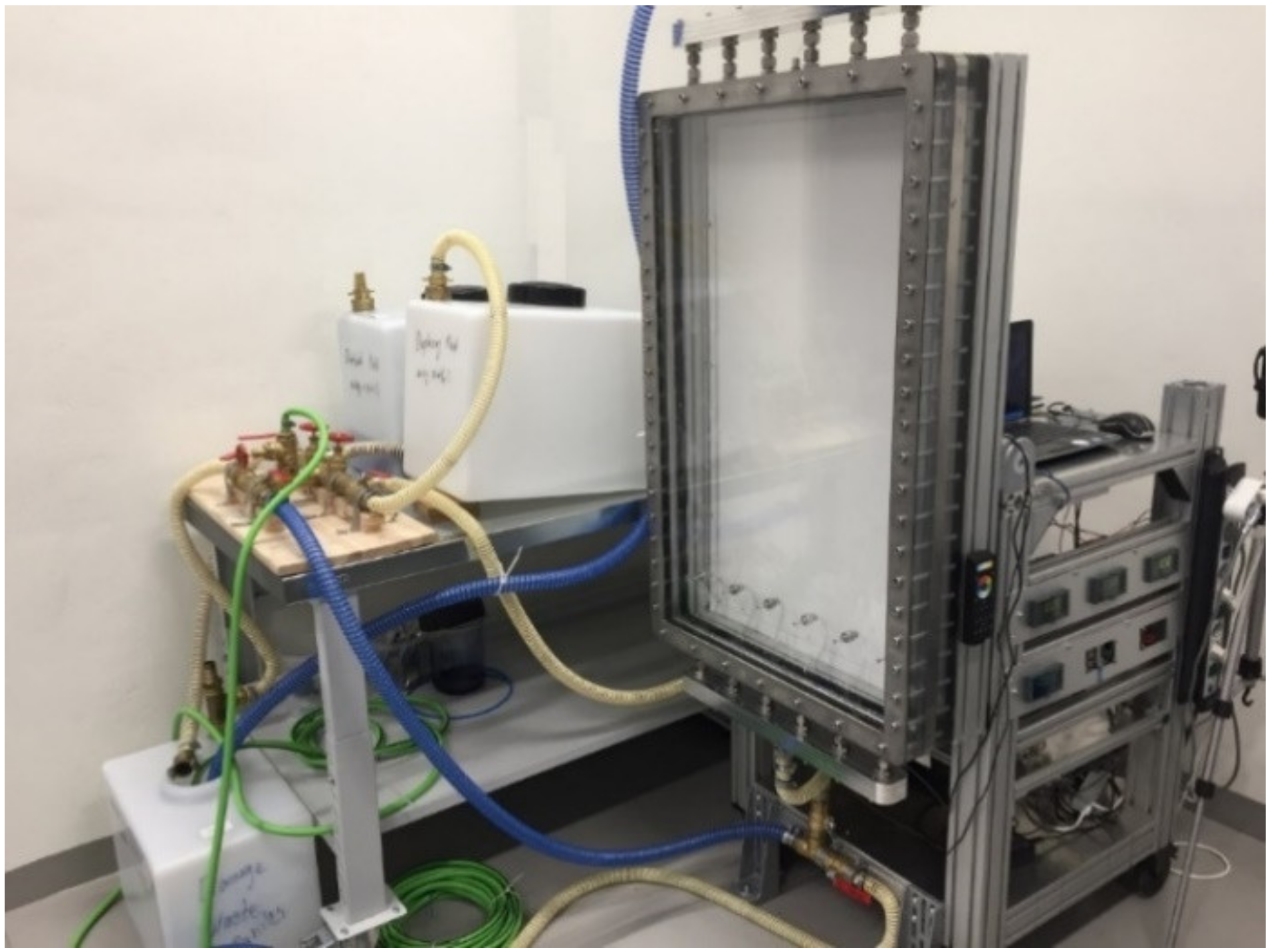
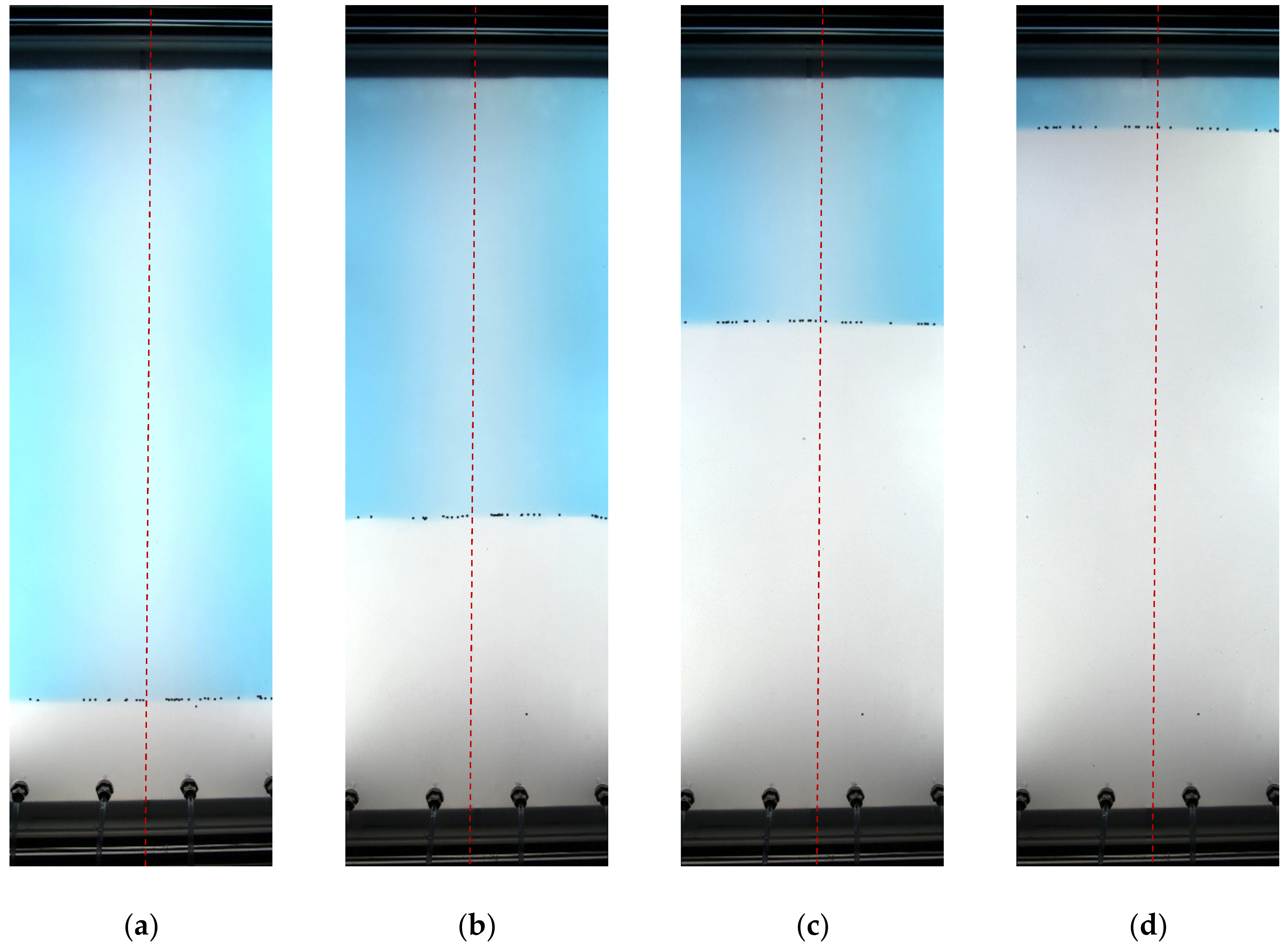
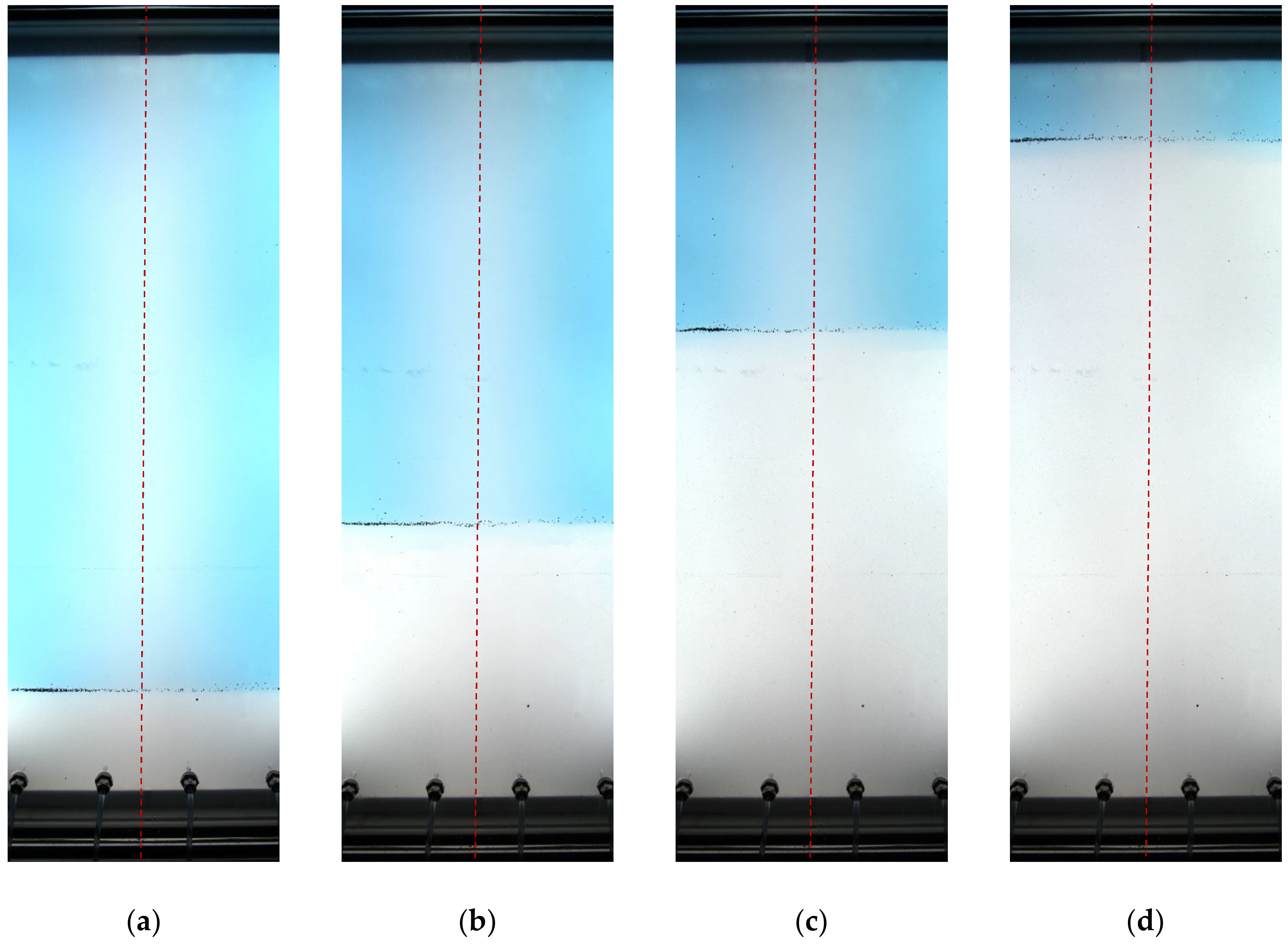
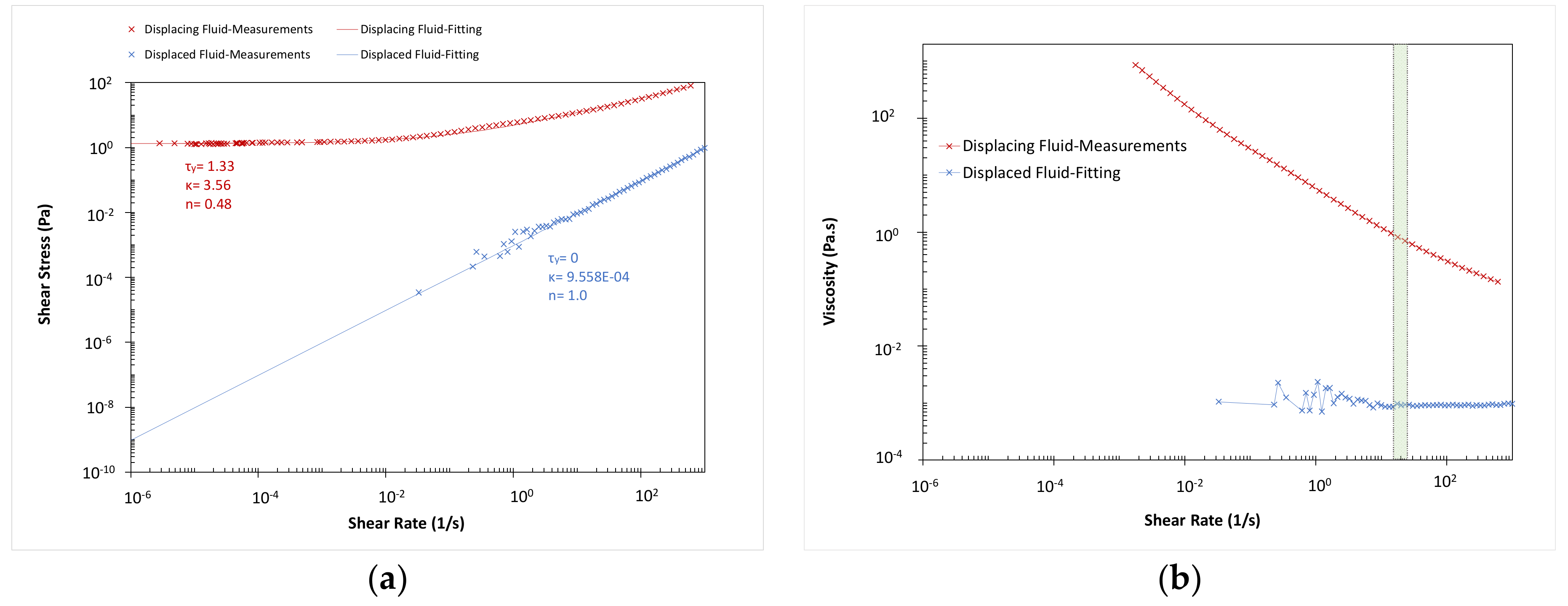

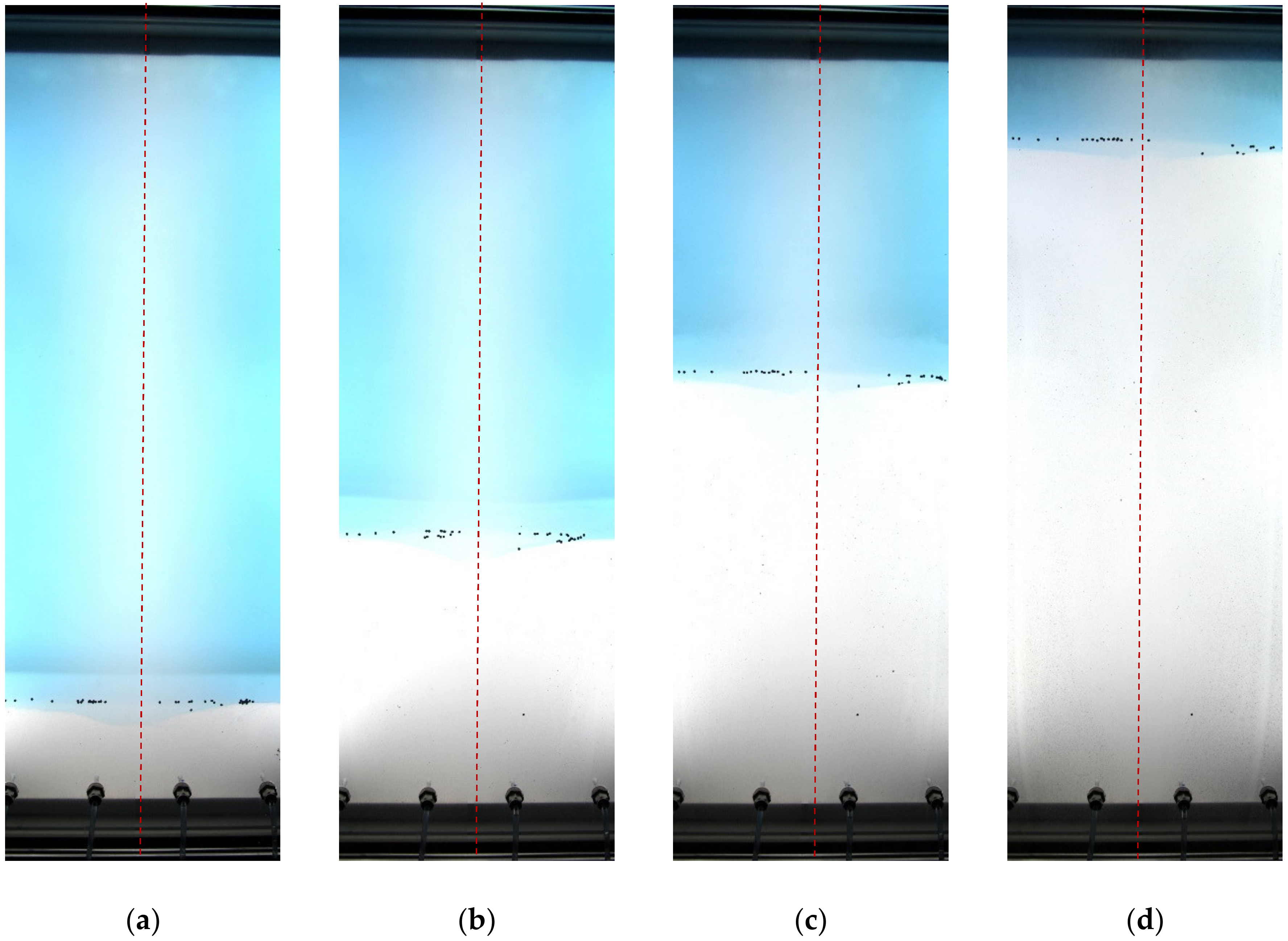

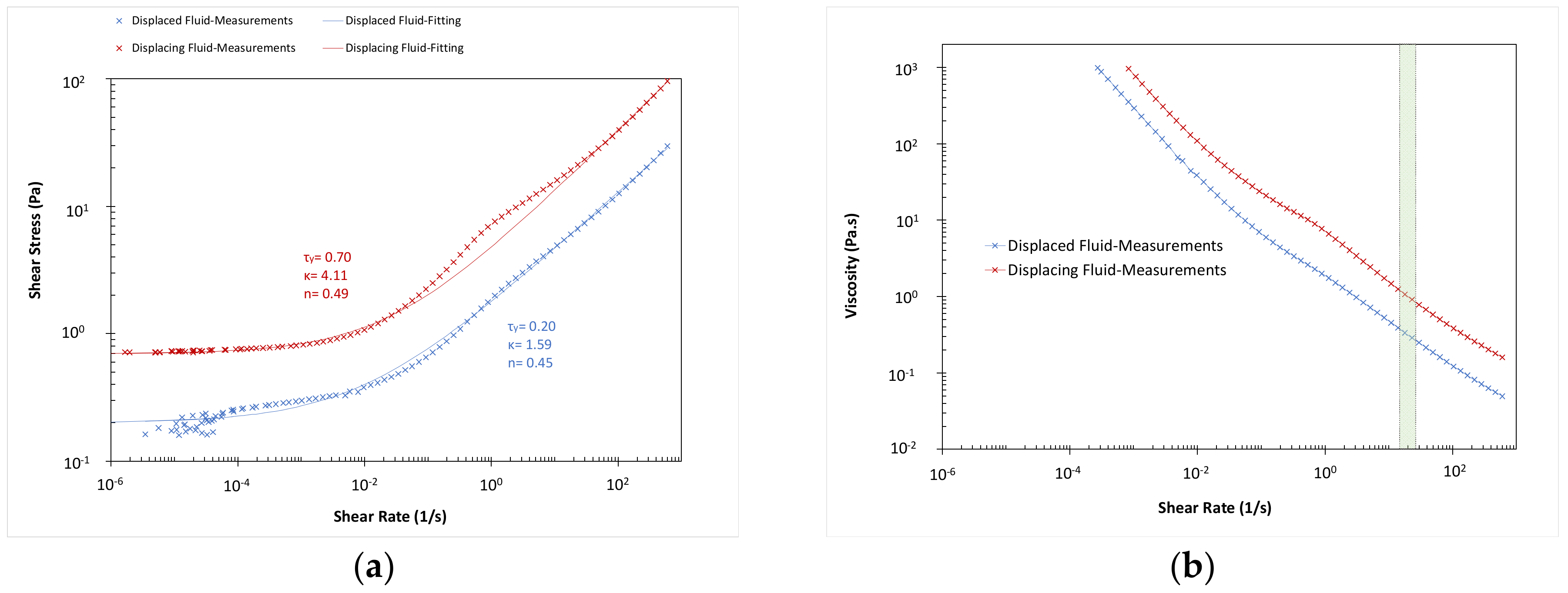
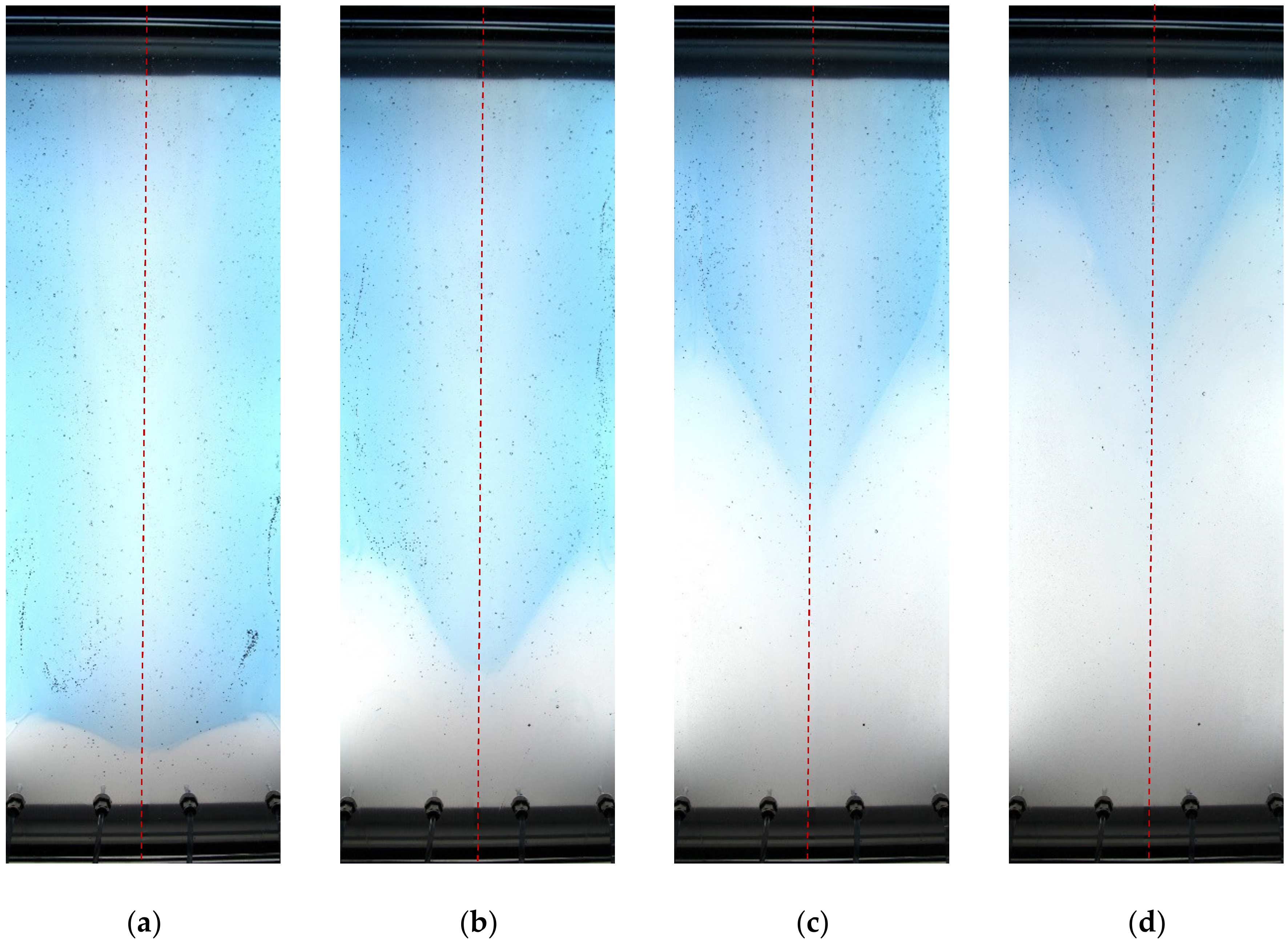
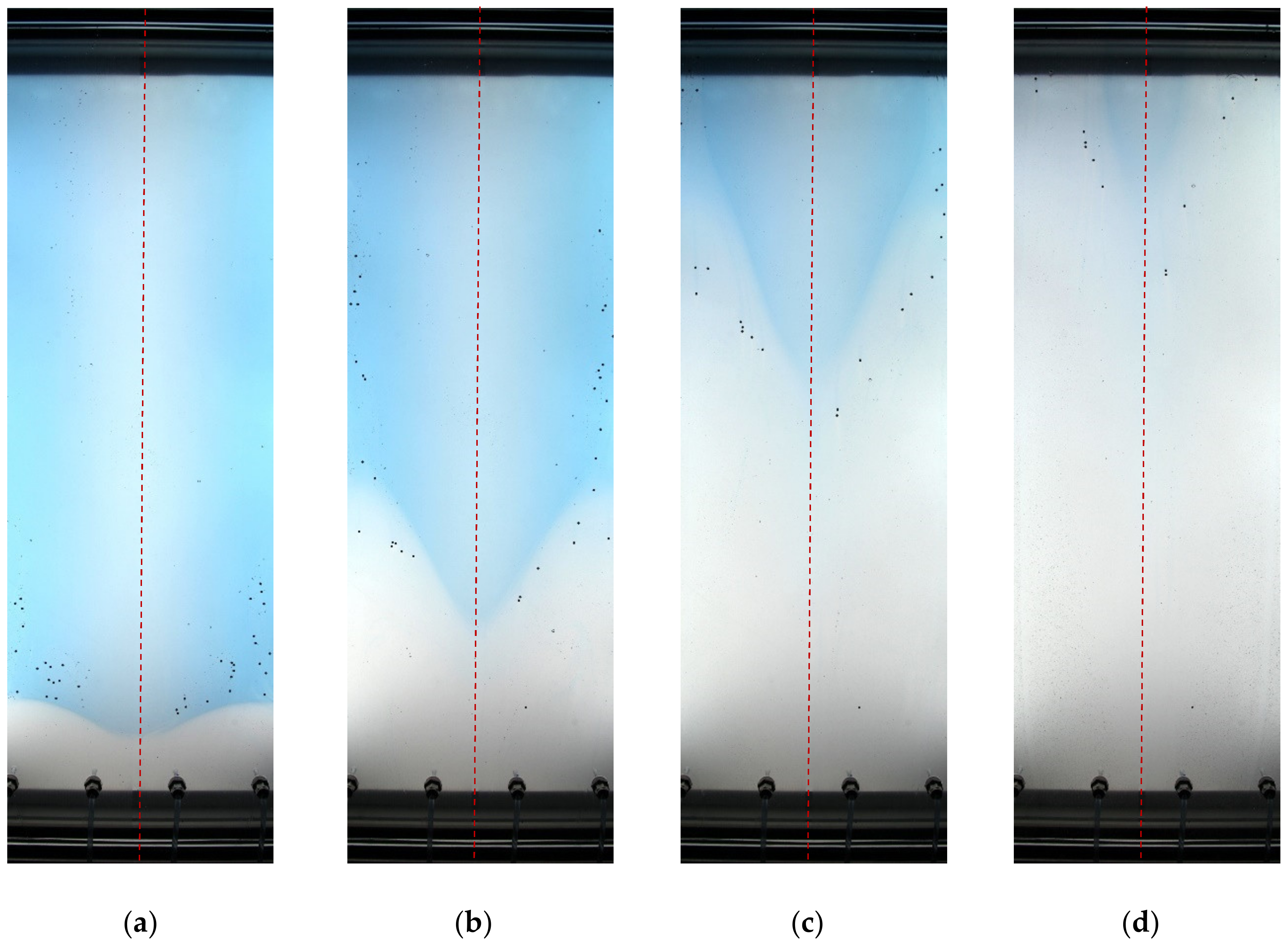
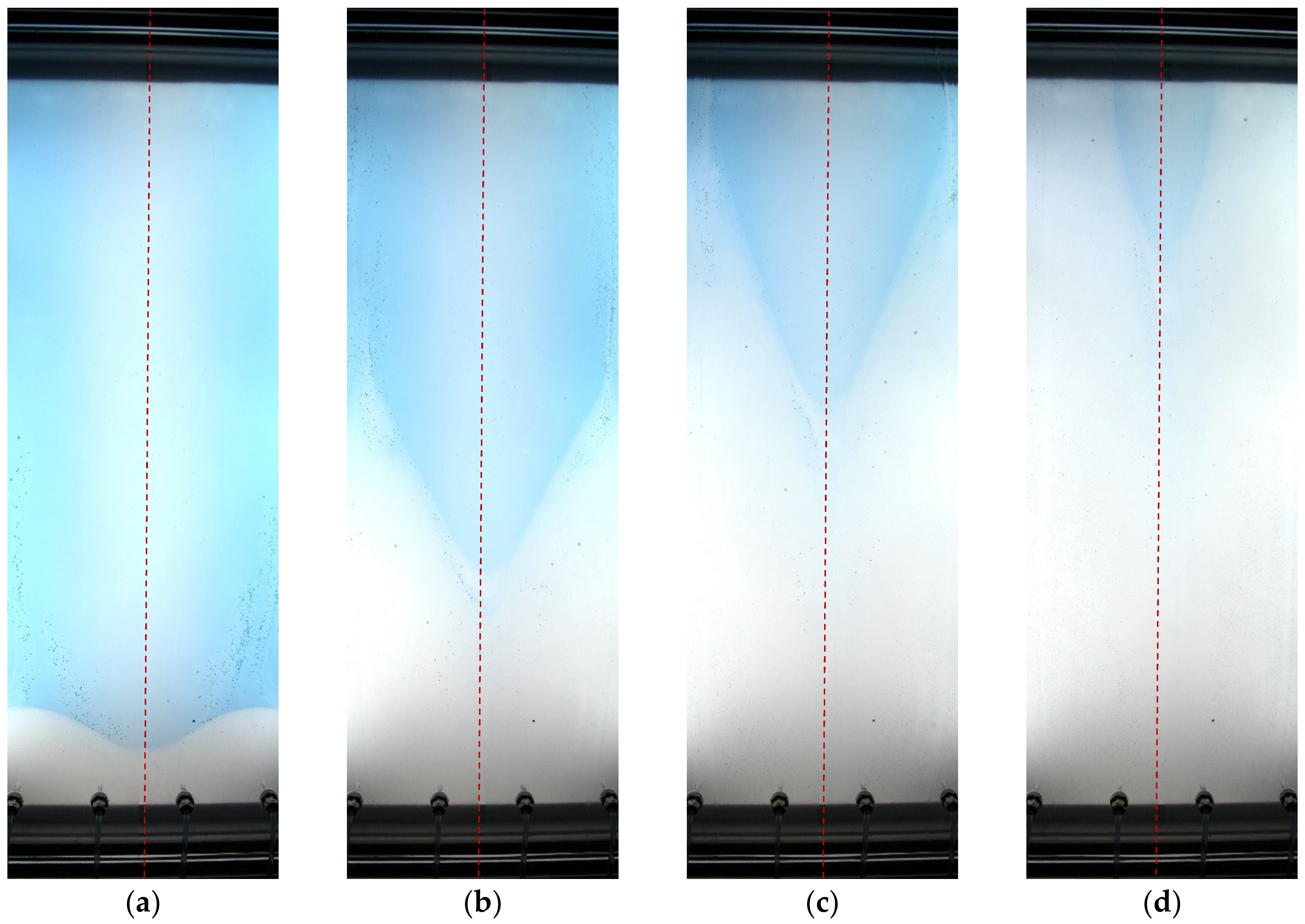
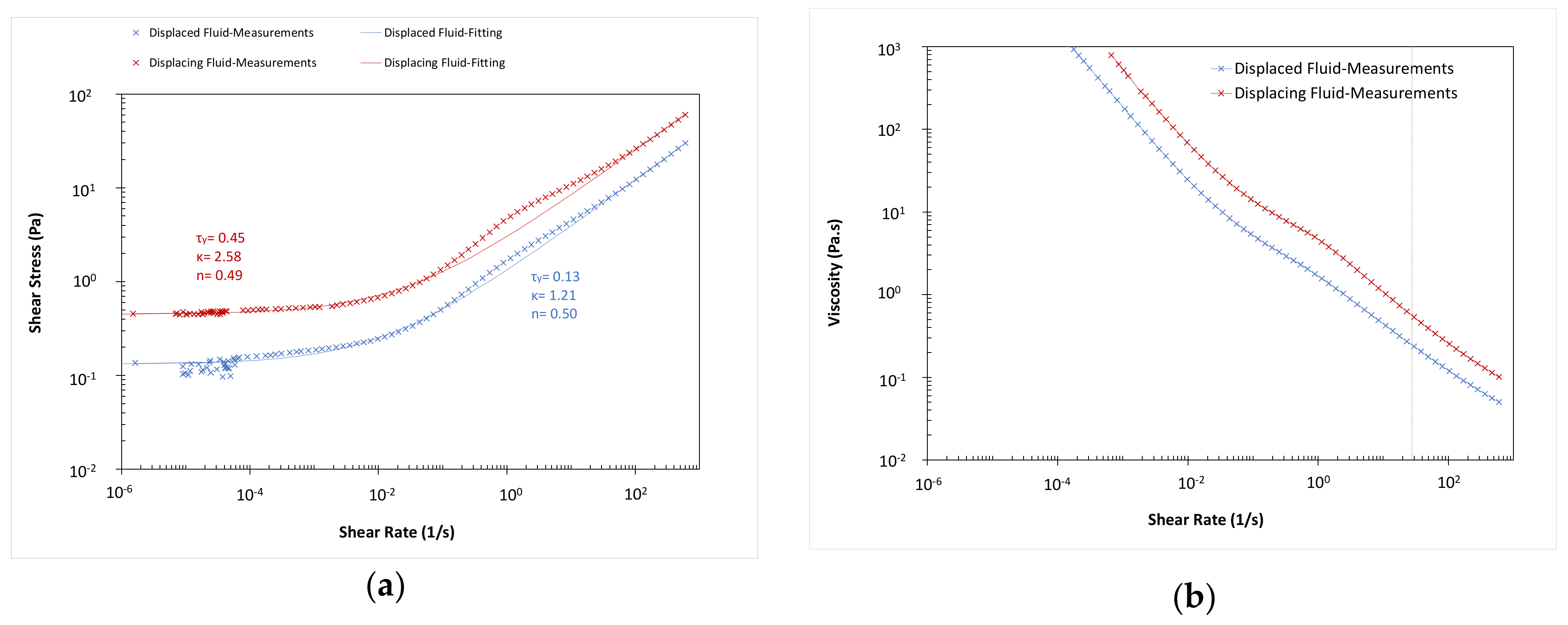
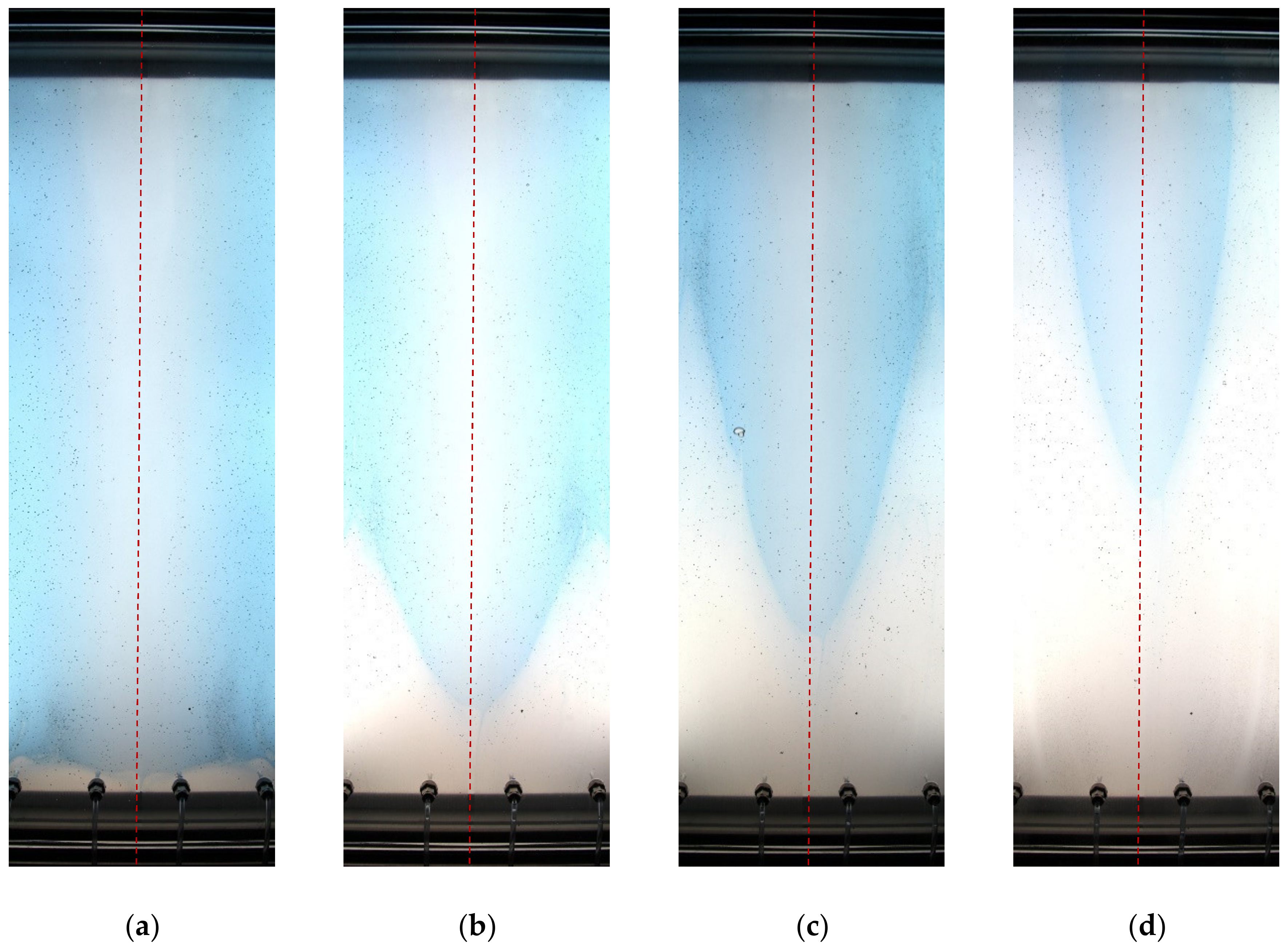
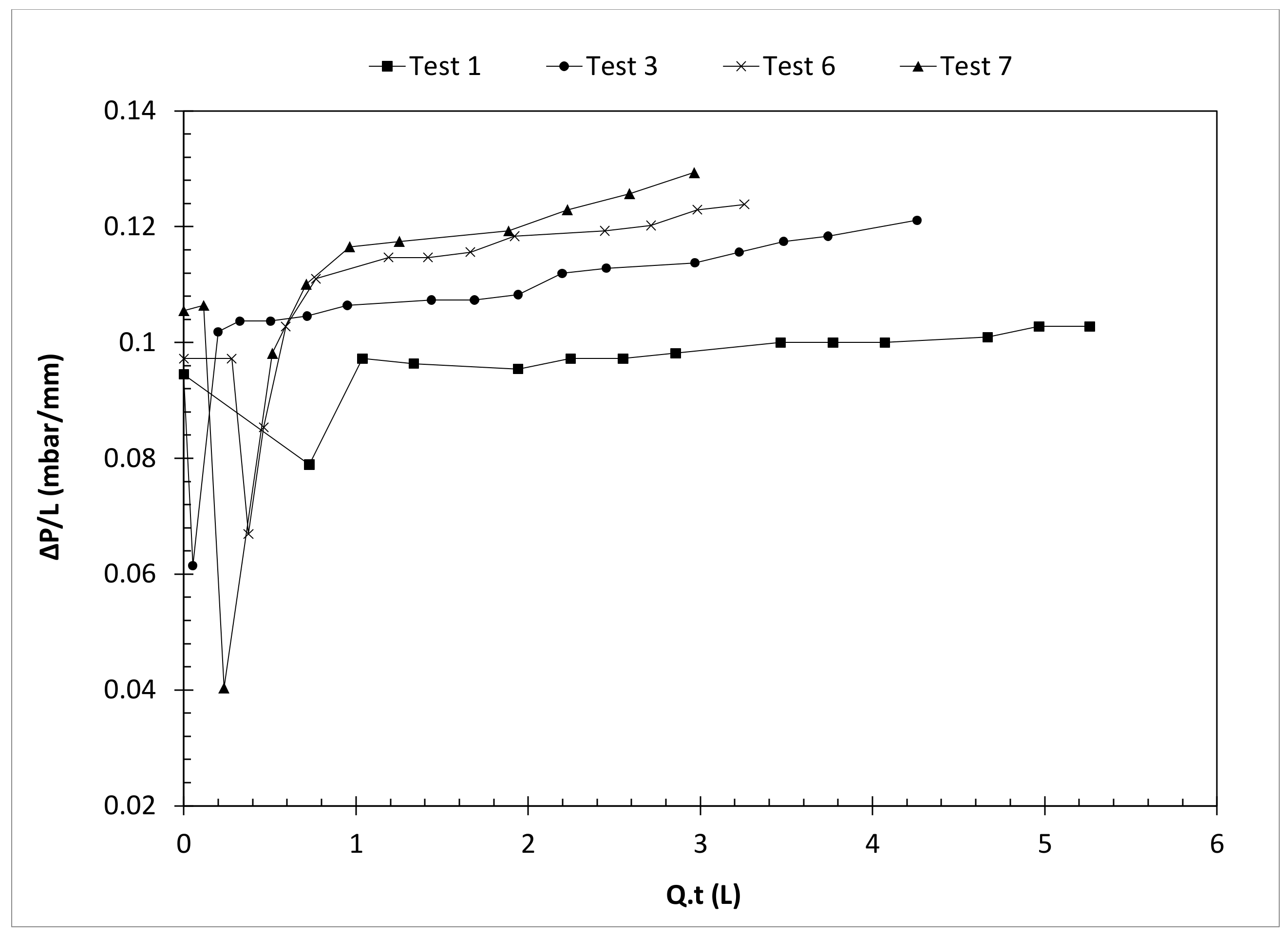
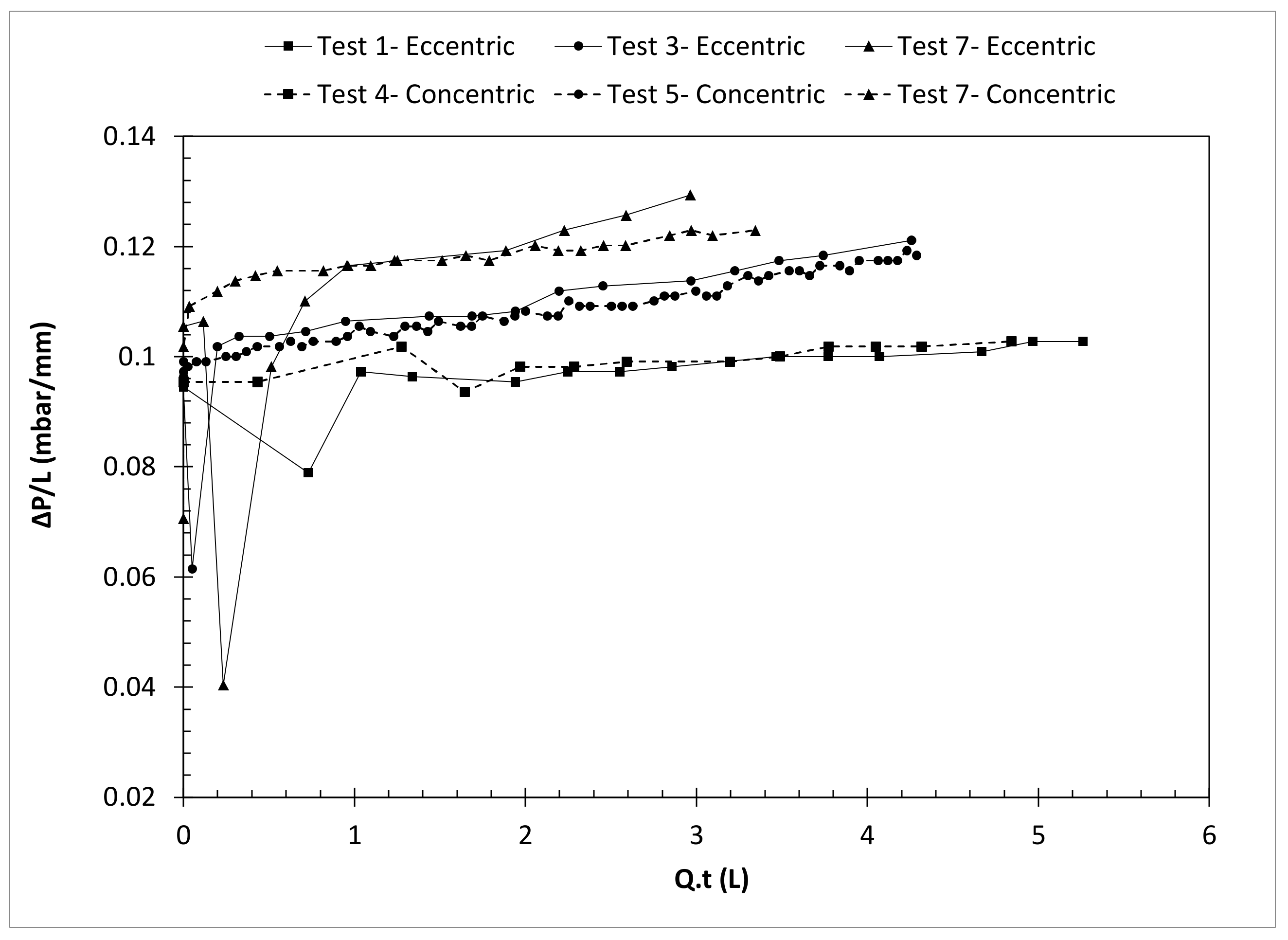
| Parameters | Real Data | Down-Scaled Data |
|---|---|---|
| Length of the Cementing Section (l), m | 500 | 1 |
| Wellbore Size, in | 16 1/2 | ---- |
| Casing Size, in | 13 3/8 | ---- |
| Wellbore Radius (ro), m | 0.2096 | 0.05274 |
| Casing Radius (ri), m | 0.1699 | 0.04275 |
| Gap (h), m | 0.0397 | 0.01 |
| Pump Rate (Q), m3/s | 0.02 | 3.00 × 10−4 |
| Mean Flow Velocity (), m/s | 0.42 | 0.10 |
| Density of Displaced Fluid (ρ1), kg/m3 | 1440 | 1000 |
| Density of Displacing Fluid (ρ2), kg/m3 | 1800 | 1150 |
| Yield-Stress of Displaced Fluid (τy1), Pa | 4.79 | 0.2 |
| Yield-Stress of Displacing Fluid (τy2), Pa | 7.05 | 0.7 |
| Consistency Index of Displaced Fluid (κ1), Pasn | 0.02 | 1.59 |
| Consistency Index of Displacing Fluid (κ2), Pasn | 0.03 | 4.11 |
| Flow Behavior Index of Displaced Fluid (n1), dimensionless | 0.7 | 0.45 |
| Flow Behavior Index of Displacing Fluid (n2), dimensionless | 1 | 0.49 |
| Effective Shear Rate (γ.e), s−1 | 42.61 | 40.04 |
| Effective Viscosity of Displaced Fluid (µe1), Pas | 0.1189 | 0.2139 |
| Effective Viscosity of Displacing Fluid (µe2), Pas | 0.1955 | 0.6434 |
| Aspect ratio of circumferential and radial length scales (δ) | 0.033 | 0.033 |
| Aspect ratio of length and width scales (η) | 12598 | 100 |
| Reynolds Number (Re2) | 309.05 | 3.57 |
| Buoyancy Number (Bu) | 67.25 | 2.28 |
| Test | Fluid Type | pH | Carbopol (wt/wt%) | NaOH (wt/wt%) | Sucrose (wt/wt%) | NaCl (wt/wt%) | Blue Dye (wt/wt%) |
|---|---|---|---|---|---|---|---|
| 1 | Displaced | ----- | 0.00 | 0.000 | 0 | 0.00000 | 0.00023 |
| Displacing | ----- | 0.00 | 0.000 | 35 | 0.00042 | 0.00000 | |
| 2 | Displaced | ----- | 0.00 | 0.000 | 0 | 0.00000 | 0.00023 |
| Displacing | ----- | 0.00 | 0.000 | 35 | 0.00042 | 0.00000 | |
| 3 | Displaced | ----- | 0.00 | 0.000 | 0 | 0.00000 | 0.00023 |
| Displacing | 7.40 | 0.10 | 0.035 | 35 | 0.00042 | 0.00000 | |
| 4 | Displaced | ----- | 0.00 | 0.000 | 0 | 0.00000 | 0.00023 |
| Displacing | 7.40 | 0.10 | 0.035 | 35 | 0.00042 | 0.00000 | |
| 5 | Displaced | ----- | 0.00 | 0.000 | 0 | 0.00000 | 0.00023 |
| Displacing | 7.40 | 0.10 | 0.035 | 35 | 0.00042 | 0.00000 | |
| 6 | Displaced | 7.41 | 0.08 | 0.032 | 0 | 0.00000 | 0.00023 |
| Displacing | 6.86 | 0.10 | 0.035 | 35 | 0.00042 | 0.00000 | |
| 7 | Displaced | 7.41 | 0.08 | 0.032 | 0 | 0.00000 | 0.00023 |
| Displacing | 6.86 | 0.10 | 0.035 | 35 | 0.00042 | 0.00000 | |
| 8 | Displaced | 7.41 | 0.08 | 0.032 | 0 | 0.00000 | 0.00023 |
| Displacing | 6.86 | 0.10 | 0.035 | 35 | 0.00042 | 0.00000 | |
| 9 | Displaced | 8.08 | 0.08 | 0.032 | 7 | 0.00000 | 0.00023 |
| Displacing | 7.53 | 0.10 | 0.032 | 21 | 0.00042 | 0.00000 |
| Test | ρ1 (g/cc) | ρ2 (g/cc) | τy1 (Pa) | τy2 (Pa) | κ1 (Pasn) | κ2 (Pasn) | n1 | n2 |
|---|---|---|---|---|---|---|---|---|
| 1 | 1 | 1.15 | 0 | 0 | 9.56 × 10−4 | 3.17 × 10−3 | 1.00 | 1.00 |
| 2 | 1 | 1.15 | 0 | 0 | 9.56 × 10−4 | 3.17 × 10−3 | 1.00 | 1.00 |
| 3 | 1 | 1.15 | 0 | 1.33 | 9.56 × 10−4 | 3.56 | 1.00 | 0.48 |
| 4 | 1 | 1.15 | 0 | 1.33 | 9.56 × 10−4 | 3.56 | 1.00 | 0.48 |
| 5 | 1 | 1.15 | 0 | 1.33 | 9.56 × 10−4 | 3.56 | 1.00 | 0.48 |
| 6 | 1 | 1.15 | 0.2 | 0.7 | 1.59 | 4.11 | 0.45 | 0.49 |
| 7 | 1 | 1.15 | 0.2 | 0.7 | 1.59 | 4.11 | 0.45 | 0.49 |
| 8 | 1 | 1.15 | 0.2 | 0.7 | 1.59 | 4.11 | 0.45 | 0.49 |
| 9 | 1.027 | 1.086 | 0.13 | 0.45 | 1.21 | 2.58 | 0.50 | 0.49 |
| No. | Particle Name | dp (µm) | ρp(g/cc) |
|---|---|---|---|
| 1 | Fluorescent Green Polyethylene Microspheres | 710–850 | 1.025 |
| 2 | Grey Polyethylene Microspheres | 850–1000 | 1.05 |
| 3 | White Polystyrene Polymer Spheres | 2960–3000 | 1.05 |
| Test | Displaced Fluid | Displacing Fluid | dp (µm) | Q (L/min) | γ·e (s−1) | Re2 | Bu |
|---|---|---|---|---|---|---|---|
| 1 | Water | Water + Sucrose | 3000 | 18.06 | 20.09 | 364.86 | 924.49 |
| 2 | Water | Water + Sucrose | 1000 | 18.28 | 20.33 | 369.30 | 913.36 |
| 3 | Water | Carbopol + Sucrose | 1000 | 15.27 | 16.99 | 1.09 | 3.91 |
| 4 | Water | Carbopol + Sucrose | 3000 | 22.86 | 25.43 | 2.05 | 3.28 |
| 5 | Water | Carbopol + Sucrose | 850 | 22.17 | 24.66 | 1.96 | 3.32 |
| 6 | Carbopol | Carbopol + Sucrose | 1000 | 15.43 | 17.16 | 0.98 | 3.47 |
| 7 | Carbopol | Carbopol + Sucrose | 3000 | 21.6 | 24.03 | 1.64 | 2.96 |
| 8 | Carbopol | Carbopol + Sucrose | 850 | 25.53 | 28.40 | 2.12 | 2.74 |
| 9 | Carbopol + Sucrose | Carbopol + Sucrose | 850 | 25.14 | 27.96 | 3.11 | 1.69 |
Publisher’s Note: MDPI stays neutral with regard to jurisdictional claims in published maps and institutional affiliations. |
© 2021 by the authors. Licensee MDPI, Basel, Switzerland. This article is an open access article distributed under the terms and conditions of the Creative Commons Attribution (CC BY) license (http://creativecommons.org/licenses/by/4.0/).
Share and Cite
Taheri, A.; Ytrehus, J.D.; Lund, B.; Torsæter, M. Experimental Study of the Use of Tracing Particles for Interface Tracking in Primary Cementing in an Eccentric Hele–Shaw Cell. Energies 2021, 14, 1884. https://doi.org/10.3390/en14071884
Taheri A, Ytrehus JD, Lund B, Torsæter M. Experimental Study of the Use of Tracing Particles for Interface Tracking in Primary Cementing in an Eccentric Hele–Shaw Cell. Energies. 2021; 14(7):1884. https://doi.org/10.3390/en14071884
Chicago/Turabian StyleTaheri, Amir, Jan David Ytrehus, Bjørnar Lund, and Malin Torsæter. 2021. "Experimental Study of the Use of Tracing Particles for Interface Tracking in Primary Cementing in an Eccentric Hele–Shaw Cell" Energies 14, no. 7: 1884. https://doi.org/10.3390/en14071884
APA StyleTaheri, A., Ytrehus, J. D., Lund, B., & Torsæter, M. (2021). Experimental Study of the Use of Tracing Particles for Interface Tracking in Primary Cementing in an Eccentric Hele–Shaw Cell. Energies, 14(7), 1884. https://doi.org/10.3390/en14071884






